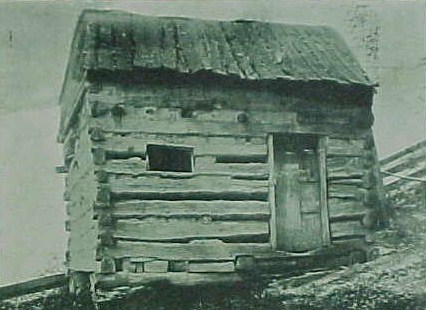The Log College was the first American Presbyterian theological seminary in North America, located in what is now Warminster, Pennsylvania. It was founded by William Tennent and his son Gilbert Tennent and operated from 1726 or 1727 until William Tennent's death in 1746. Founded at a time when there were few college educated ministers in North America, the Log College had no charter and was purely a private institution. It was a "remarkable institution organized at the Forks of the Neshaminy in Bucks County, Pennsylvania, by the Reverend William Tennent to which on its removal to land given him on the York Road near Hartsville in the same county, the name 'Log College' was scoffingly given."
The Log College was about 20 feet long and 20 feet wide. It was very plain according to George Whitefield's journal. In 1739 the Presbyterian Synod of Philadelphia, at that time the only Presbyterian Synod in North America, passed a rule prohibiting ministers from American colleges or seminaries, except for those from Harvard or Yale, in effect banning the Log College's graduates. This rule led to pressure to charter new colleges and eventually led to the formation of Princeton University.
Graduates

The number of graduates is unknown, but is thought to be about 18 or 20. All of the graduates were adherents of the New Side in the Old Side-New Side Controversy.
The known graduates include Charles Beatty, Samuel Blair, Samuel Finley, William Robinson, John Rowland, Charles Tennent, John Tennent, and William Tennent Jr.
Gilbert Tennent did not graduate from the Log College. Dr. John Redman was the only known graduate not to enter the ministry. He chose to enter the field of medicine instead.
Relationship to Princeton University

There are many connections between the Log College and Princeton, but it is not accurate to say that the Log College was an antecedent of the College of New Jersey (which changed its name to Princeton University in 1896). From its inception, under the guidance of Presbyterian minister Jonathan Dickinson, Princeton focused on a broad range of the liberal arts and sciences, in contrast to the Log College's explicit preparation for the ministry. A closer connection has often been proposed, perhaps in an effort to claim an earlier founding date for Princeton. However, soon after Princeton was founded, a number of Log College men joined their New Side brethren from Yale and Harvard in support of the new venture. Six months after the granting of Princeton's charter in October 1746, and shortly before classes started in May 1747, Log College alumni Samuel Blair, Samuel Finley, and William Tennent, Jr., along with adherents Gilbert Tennent and Richard Treat, accepted election as Princeton trustees. Finley later became the fifth President of Princeton University.
Sources

- Princeton University History extract from Leitch
- Warminster Township history
- Symmes, Frank Rosebrook (1904). History of the Old Tennent Church. G.W. Burroughs, printer. p. 472.Â
- Murphy, Thomas (1889). The Presbytery of the log college: or, the cradle of the Presbyterian Church in America. Presbyterian Board of Publication and Sabbath-School Work. p. 526.Â
- Alexander, Archibald (1845). The Log College: biographical sketches of William Tennent and his students, together with an account of the revivals under their ministries. Princeton. p. 272.Â
References
- ^ a b Collins, Varnum Lansing (1914). Princeton. Oxford University Press. pp. 5â€"7.Â
- ^ Tennent, Mary (1971). Light in Darkness: The Story of William Tennent and the Log College. Greensboro Printing Company. pp. 46â€"50.Â
- ^ a b Leitch, Alexander (1978). A Princeton Companion. Princeton University Press. Retrieved 11 April 2010.Â







0 komentar :
Posting Komentar